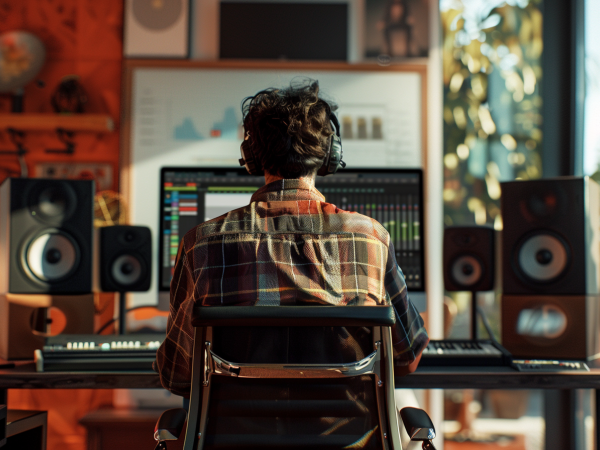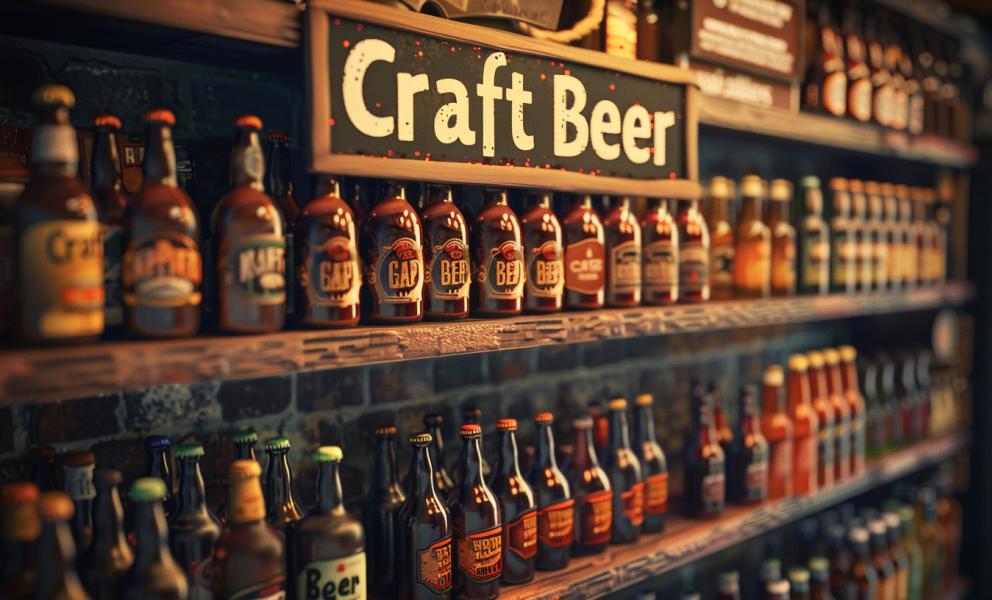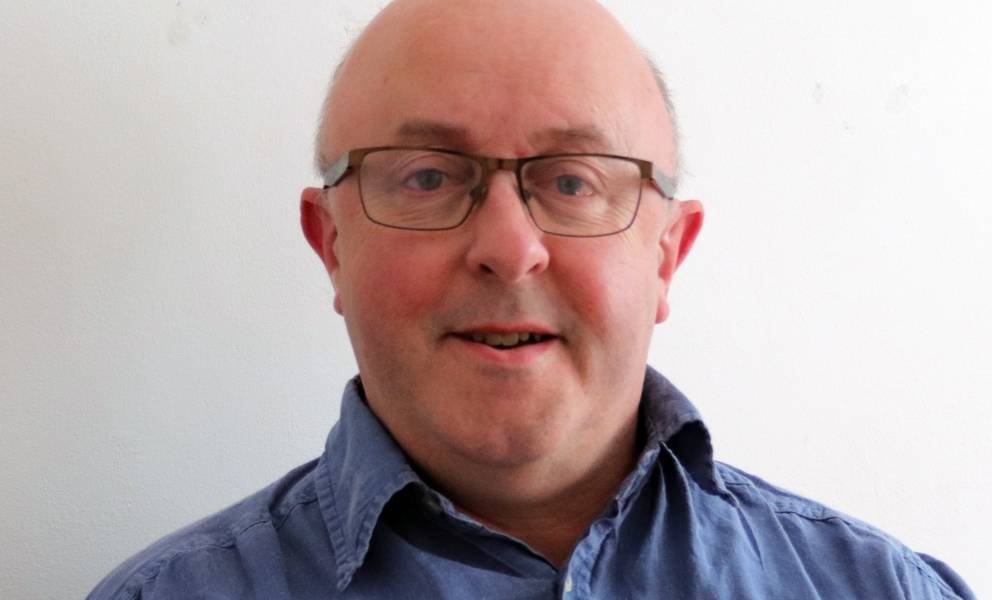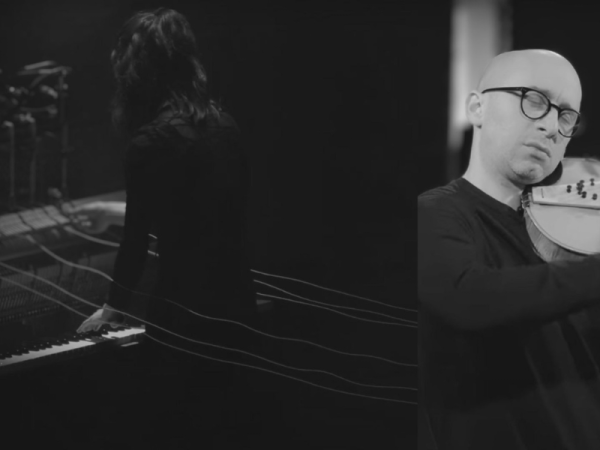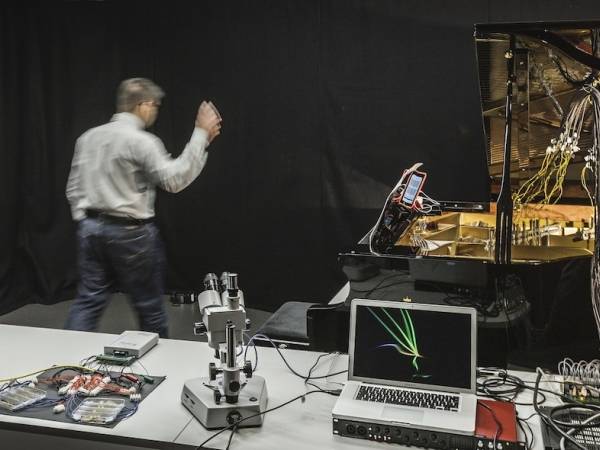14 Minuten
We mainly hear electroacoustic music in a fixed and final form. We mainly strive for an acousmatic listening stance where we favour sound oversight. We rarely get to ‘go behind the scenes’ and consider compositional methods and the tools composers use. The sound of craft in electroacoustic music might be discussed by listening to a composer’s works across time and considering whether practice is shared. By conducting so-called ‘technological listening’ during analysis, linking the tools composers use to the sounds they make, we have the potential to embody shared practice, learn through doing, and assess through understanding. Reflecting upon the works of Ezra Shales (The Shape of Craft), Larry Shiner (The Invention of Art) and The Craftsman by Richard Sennett, this paper proposes that electroacoustic music might be examined as a craft and that the artisan develops their work through tool development and a ‘hands-on’ approach to sound. A number of musical examples will expose common tropes shared across a highly diverse electroacoustic world. A number of sound manipulation tools in Pure Data will highlight how composers continue to develop their craft through the creation, adaptation and extension of tools.
Introduction and Questions
This paper proposes something that we probably already do (or would like to do) which I would like to call electroacoustic craft. I hope to share some common ground between composers, their music, and their working methods, which resonates with the idea of craft in other disciplines. Whilst I may generalize, I stress that composers’ works are highly individual and their creative practice may reflect this individuality. I want to talk positively about craft and artisanal activity, not negatively about art, artists and artwork. The words art, craft, artist and artisan have been interchanged over the centuries and deployed strategically and exclusively from time to time.
I certainly don’t mean to be downgrading what I do by considering my practice and output as ‘craft’ rather than ‘art’: it’s just that I am finding the idea of craft useful in both my practice and my work as an educator. I am very keen to show what I do and encourage others to talk about their practice as a means of understanding electroacoustic music. This demonstration of activity is also part of the learning and assessment processes that students want to understand, particularly when it involves creativity. It has implications for the way we assess, our use of group work and the traditional classroom versus workshop model.
The idea for this research stems from past conferences at Sheffield including the Electroacoustic Music Studies Network conference in 2015 where Canadian composer Laurie Radford’s contribution was titled Artisans and Implements: The Craft of Electroacoustic Composition (Radford, 2015). Perhaps it was because my chosen title for the conference was The Art of Electroacoustic Music which in hindsight feels somewhat elitist.
Andrew Hugill’s 2016 Organized Sound article titled ‘On Style in Electroacoustic Music’ (Hugill, 2016) describes how style is related to action, method, and technique (and potentially skill). Under the heading, ‘the myth of inclusivity’ Hugill points out that the phrase ‘all sounds are available to the composer’ is often not the case, and that sounds and methods are quite selective.
He also mentions the comparative analysis of Charles Tilly (Tilly, 1984) where commonalities (and subsequent developments or differences) are developed as cases or rules. Tilly’s analytical vocabulary comes under four headings:
- individualising (spotting something original or iconic),
- universalising (spotting a general trend),
- variation-finding (identifying differences within a trend) and
- encompassing which appears to be a dynamic amalgam of the previous three.
However, the development of exemplar styles continues to remain elusive. I propose that through sharing understandings, analyses and methods of a craft approach go some way towards the foundation of a style. Hugill states, ‘it is not the choice of sounds, but the way that they are treated’ (Hugill, 2016, p.6). It’s also about what you do and how you do it.
It is also important to reflect upon the rapidly changing nature of electroacoustic music (particularly in the UK, and particularly in academia). The electroacoustic music community has grown quite substantially in the past decade; tools are relatively ubiquitous and the barriers between educational institutions and the public at large have come down. Creative practice remains at the heart of most electroacoustic music programmes (within a modular structure). It is mixed with music for multi-media, games, sound design and film, coding, building and performing. This practice is bounded less and less by seminal texts (for good or for bad). But it is here where craft can help develop a student’s work and others making electroacoustic music. Relying upon a shared practice, rooted in methods, transparency and communication, a craft approach can free composers from the difficulties of ‘artistry’ and being an ‘artist’ which could be seen as singular, exclusive and secretive. It is unfortunate that in UK Higher Education Institutions, creative practice for staff and students alike is graded, and that a ‘from first to four star’ culture of competition is financially driven. Classification of originality, significance and rigour for creative research as well as mapping learning outcomes to assessment criteria for creative practice has never made fostering collaboration easy.1, 2
This paper now divides into the theoretical and the practical. By reflecting upon the works of Ezra Shales (Shales, 2017), Larry Shiner (Shiner, 2001) and Richard Sennett (Sennett, 2008), and highlighting craft and skill in a number of works from composers based mainly in the UK, I hope to show that electroacoustic music can have the ‘fingerprint’ of the composer whilst demonstrating a shared and embodied hand. Larry Shiner’s and Ezra Shales’ work document a ‘from craft to art’ and ‘from artisan to artist’ whilst arguing that both can exist quite fluidly. Shiner takes an historical approach; Shales gives us case studies. Shiner perhaps focuses more on music, particularly in the 18th and 19th Centuries, but both books allow for a perspective that can look backwards and see a future forwards (for craft).
At the heart of the artisan’s craft is the creation, use and development of tools, the acquisition of skill and the use of the hands often within a shared space such as a workshop. For electroacoustic crafters, the embodied hand often reflects the energy of sound shapes and we move to sound even through such bland tools as the fader or dial. Many composers have their own toolkits. Some are DAW-based; others are in extensible languages such as Supercollider, MaxMSP and PureData. My tools happen to exist in PureData and in addition to a free download of basic tools, I continue to adapt tools to suit my needs and try as best I can to document what I do. There is no doubt that composing electroacoustic music is very personal but we also work to a number of broad themes and shared goals. These include the use of tropes, clichés, methods, sounds, and structures. Rhetorical devices are sometimes heard towards beginnings and endings, and are also present when we articulate difference. Pieces are often of a similar duration, and duration often has implications for types of sound and manipulation.
Composers such as Trevor Wishart have been very open about their methods and the Composers Desktop Project has a very strong community feel with a broader nod to the tradition of musique concrète. I will cite examples from Trevor Wishart, Andrew Lewis and John Young in an attempt to show the similarities and differences of their craft. I will also document my development of a well-used archetype using a common compositional technique.
Key questions can be summarized as follows and have ongoing responses:
- What is craft (in electroacoustic music)?
- How can a craft-based approach help us understand and develop electroacoustic music?
- How might a craft-based approach to electroacoustic music composition be introduced in (my) teaching?
Traditionally, craft is the artisan working as either master or apprentice in the workshop using their hands and tools. For many composers the mouse, sliders and other interfaces help us generate very natural shapes which we embody as we react to sound as a physical material.
I wish to amplify Richard Sennett’s hopes that ‘the craftsman’s way of working can give people an anchor in material reality’ (Sennett, 2008, p.11). Many of us would also relate to Ezra Shales’ view that ‘Craft demands that humans meet material at some middle ground that is not entirely anthropocentric. ‘Empathy for material’ is a much better rule than ‘truth to material” (Shales, 2017, p.21). A generalized definition for my analysis and creative practice might be that ‘Craft is the skilled use and development of tools that enables the deployment of archetypes, tropes, and sound manipulations within an embodied compositional method.’ A great majority of electroacoustic craft exposes group identity through shared work, methods and techniques. From time to time, for competitions, conferences, exhibitions and Research Assessment Frameworks, the checkbox, rating scale and written contextual arguments are sadly mandatory.
A refreshment break
Without trivialising the word ‘craft’, I would like to point out how it has entered the mainstream (see figure 1). The idea of craft is broadly understood as it more appropriately combines the understanding of practice to a degree plus the finished object. The idea of art, for many, remains quite subjective and in some cases quite elitist. More importantly, the notion of the craft, craftsperson and artisan can include non-practitioners and the everyday person in the street. This is probably due to the rise of specialist crafts and the attachment of the word to food and drink. Who doesn’t go every now and again to the farm shop as opposed to the supermarket, in the search for better quality and an attempt to bypass the middleman! Note however the hike in price for something like artisanal cheese and craft beer. Craft ales are essentially beer from a methodological point of view, yet the differences afford extensive tasting.3
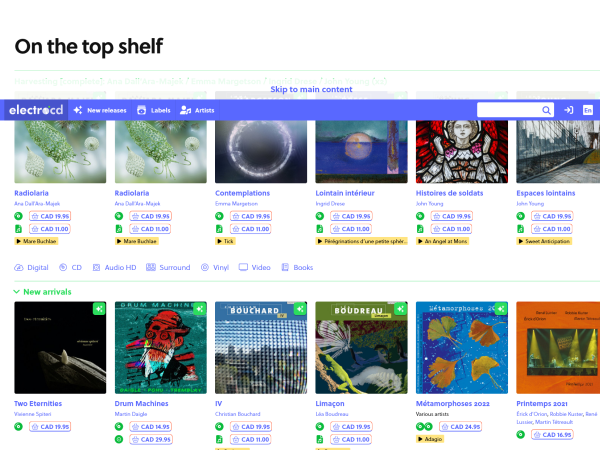
Figure 2: electrocd website screenshot
Take for example the discs of figure 2 advertised at electrocd.com. Defining successive items as ‘another piece of electroacoustic music’ is like saying the craft ales are all simply beer. It is articulating differences between composers and finding similarities both within a composer’s oeuvre and across groups of composers that enable us to better understand a craft approach. Alongside the ‘works themselves’, a number of composers including myself have written about the what, where, when and how. Spearheading this explanation is Trevor Wishart, whose books Audible Design (1994) and Sound Composition (2012) both go into considerable detail concerning pre-compositional technique alongside post-compositional analysis. His work Imago (2002) is a masterclass in the use of the Composers Desktop Project and Wishart gives us audible examples of ‘workings out’ and an insight into his ‘development upon development’ technique where technical processes extend a phrase continuously. It is also interesting to note the use of rhetorical opening statements from Wishart, through John Young, Andrew Lewis, Manuella Blackburn and Louise Rossiter to name but a few. Rhetorical devices are a useful way of hinting at a composer’s craft, particularly when listening out for repetition, embellishment and development; these devices also resonate well with Tilly’s four comparative keywords.
Musical Examples
In my technological listening, I’m making guesses based on how I might emulate the sounds I’m hearing: not trying to create the sound itself but something similar using a personal technique. The following examples, many from the opening minute of each piece, demonstrate manipulation in the horizontal using repetition and amplitude modulation to articulate an acceleration or deceleration profile - a ‘bouncing ball’ archetype. The accumulation or dispersal of energy has, for the most part, a power profile.
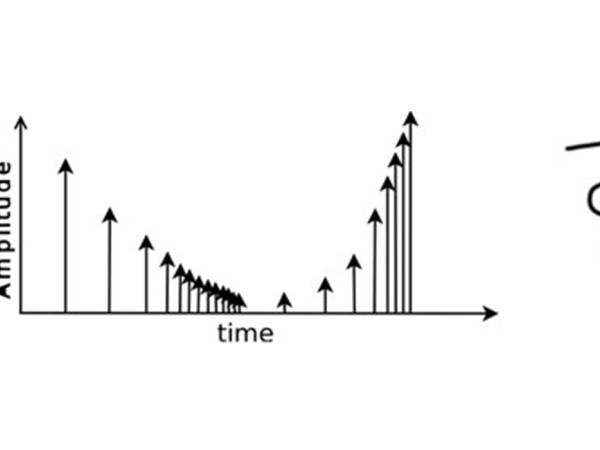
Figure 3: acceleration / deceleration motifs as ‘snake tail’
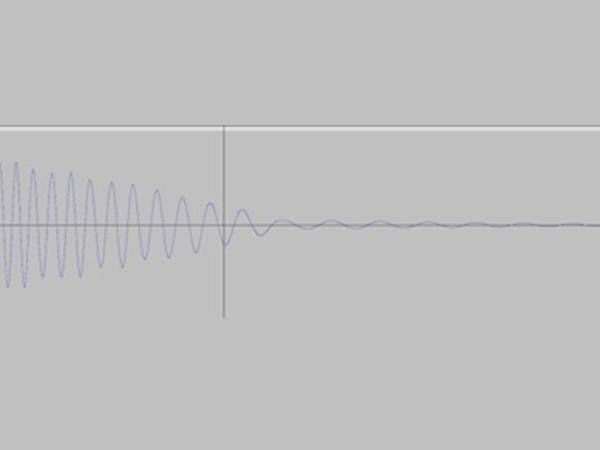
Figure 4: power scaled amplitude and frequency
This profile is often applied to the repetition of small samples, modulation frequency (often of amplitude) and panning. It was deployed most effectively in the GRM Tools ‘Delay’. I often call this energy profile ‘snake tail’ as the momentum of movement is represented by the ‘swish’ (see figures 3 and 4)
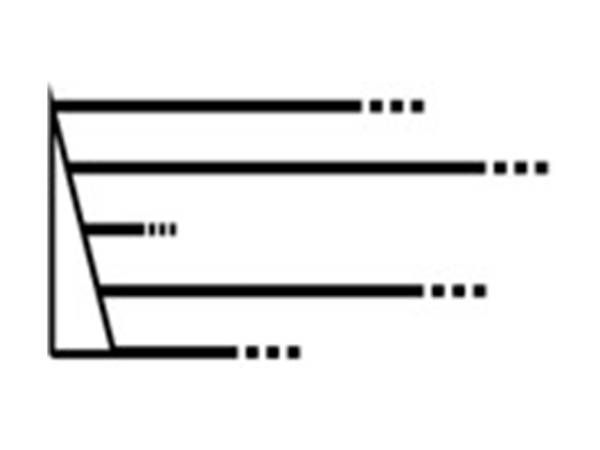
Figure 5: attack with torn flag resonance
Thinking vertically, the ‘torn flag’ (see figure 5) can represent a gesture of many audio files as a coherent whole which shatter and disperse into fragments which decay at different times. Imagine playing a piano chord and gradually removing one finger at a time. Of course, each component sound could decay in time, space and spectral content.
John Young
Virtual (1997). In this opening statement, there’s a mix but a strong element of what I suspect might be amplitude modulation and a gradual move from articulation to drone (albeit quite textural). The opening isn’t a single shot modulation from one frequency to another but a sequence of short accelerations that suggest a sense of play. It is no surprise that the motion of the wind was the inspiration for this piece, from the idea of ‘gust’ to potential centripetal/centrifugal forces.
Audio extract Virtual (1997) by John Young
Sju (1999) sees a move towards Wishart’s ‘development upon development’ technique. The opening gesture is quiet but strong which ‘activates’ a shaker-like sound which rises, becomes less articulated and more reverberant and pans away and up. It also signals a rhetorical series of similar but extended statements implying the importance of the object plus tail archetype. In the second phrase from 0:43, decelerating delays are more prominent and it is possible to hear many different decelerations. This is not only engaging at the level of skill, but these natural decay profiles (with some stereo panning within each gesture) make the very hard-panned sequence at 1:05 all the more obvious.
Audio extract: Sju (1999) by John Young
Pythagoras’ Curtain (2001) demonstrates variation and incorporation. The piece begins with a sequence of statements comprising source materials, repetitions of audible grains and the metaphor of ‘winding up’. At 1:35 this energy is let go and again we hear the ‘snake tail’ cadence, this time articulated with and by highly contrasting materials.
Three Spaces in Mid Air (2017) sees a move towards more spectral extremes. Sinusoidal elements are mixed with modulated noise-based sounds. This is perhaps both the ‘snake tail’ and the ‘torn flag’ together.
Audio extract: Three Spaces in Mid Air (2017) by John Young
In all these examples, there is an identifiable ‘similar but different’ or ‘never the same twice’ approach to repetition across the two archetypes mentioned above.
I have also tried to emulate the accelerating or decelerating delay at a sound object level (single instance, highlighting the technique) or to create a texture (to make the technique less obvious). A small selection of sounds are given effects with randomised parameters. These effects are cloned so that multiple sounds go to the same effect with slightly different parameters and polyphony is taken care of by the clone. A video of this tool in action can be seen here:
Andrew Lewis
In a final case study, Andrew Lewis developed a craft of extending sounds using time stretching. As far back as 1992, Lewis’ work Scherzo (1993) took the syllable ‘Da’ from the word ‘Daddy’ and extended successive portions of the vowel ‘aaa’ as per figure 6. Our focus moved from natural to unnatural, and from real to synthetic. With A at 434Hz the drone is an E natural, the voice is slightly flatter. The drone continues to morph through subtle mixing into bells and a G (slightly sharp) emerges. With A at 432Hz, the final drone (2:30) comprises a D natural, E flat clash. This builds tension leading to a stack of sounds and a huge swell in amplitude.
Audio extract: Scherzo (1993) by Andrew Lewis
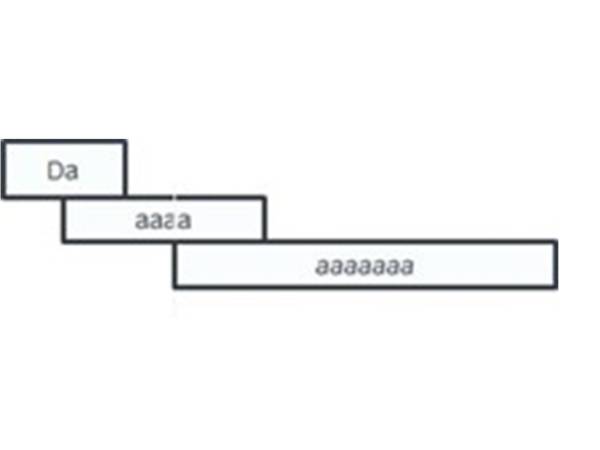
Figure 6: successive time stretches of a vowel moving from real to synthetic
Similar transitions from real and natural to unreal and synthetic can also be found in later works such as Skyline (2016). Similar to ‘trompe-lœil’ but for the ear, the bird (already synthetic perhaps in terms of synthesis, timbre, pattern creation and repetition) is gradually extended, mechanised, re-animated and re-orchestrated. For this context to be tenable the transition needs to possess a ‘degree of obviousness’. This is created using the logarithmic deceleration as shown in figure 3 and in figure 7 below.
Audio extract: Skyline (2016) by Andrew Lewis

Figure 7: cadence with decelerated ‘chirp’
In Cable Bay (1998) the real and the synthetic combine through the use of spectral shaping (a kind of vocoding) where a noisy, articulated sound (potentially natural sea wash though equally artificially granulated noise) shapes a reasonably full spectrum pitch (like a saw-tooth wave) resulting in amplitude and spectral articulation. I also use this technique. It has become part of my craft because it is a shared technique with a common tool that is used by many electroacoustic crafters. In Penmon Point (2002) there are numerous examples of the torn flag where an impulse or attack gesture triggers multiple threads that die off in different ways.
Finally, for Lewis, deceleration gestures present themselves in Cori Spezzati (2022) (originally 8-channel but here a 2-channel mix). There is plenty to attend to here. Listen out for the two decelerations (potentially examples of envelope shaping). You’ll also hear a beautifully embodied gesture - a kind of double cadence, a cut crescendo followed by a new sound that immediately picks up the pace (and it’s a bonus that it almost sounds human).
Audio extract Cori Spezzati (2022) by Andrew Lewis
Conclusion
I’m clearly talking about ‘technological listening’ but something that identifies as both sound and technique. To be more ‘crafty’, perhaps I could say, “sound wrought through technique as part of a personal compositional method”. But can we call this craft? Laurie Radford cites an article by Richard E. Clark and Fred Estes where they discuss craft and technology in education. Here craft is experiencexperience-basede based; technology is problem-based. They write, ‘Much of human knowledge is based on craft. The person developing a craft solution to a problem draws on fortunate accidents, personal experience, insight and the expertise of others to fashion a solution and revise it through trial and error. Craft is then passed on through a system of expert-based instruction and practice-based apprenticeships’ (Clark and Estes, 1998). This certainly resonates with my practice. Furthermore, electroacoustic composers also problematise their making, finding solutions in technology, be it a DAW, a self-made programme in MaxMSP or a patch chord in a Eurorack system. Radford concludes that craft is built around community and we would not be here today if it were not for that.
- 1
And yet collaboration is essential to secure research funding
- 2
In the future it might be possible to configure the classroom as a workshop and negotiate group work more effectively?
- 3
I suspect that the craft of the culinary ordinary like bread and cheese has helped bolster more longstanding crafters such as painters and potters.
Adrian Moore
Adrian Moore is a composer of electroacoustic music. He is part of the team that is University of Sheffield Sound Studios (USSS). Adrian Moore’s research interests are focused on the development of the acousmatic tradition in electroacoustic music and the performance of electroacoustic music. A significant proportion of his music is available on 4 discs, ‘Traces’, ‘Rêve de l’aube’, ‘Contrechamps’ and ‘Sequences et Tropes’ on the Empreintes DIGITALes label (www.electrocd.com) and his book ‘Sonic Art: an Introduction to Electroacoustic Music Composition’ is published by Routledge.
Article topics
Article translations are machine translated and proofread.
Artikel von Adrian Moore
 Adrian Moore
Adrian Moore 